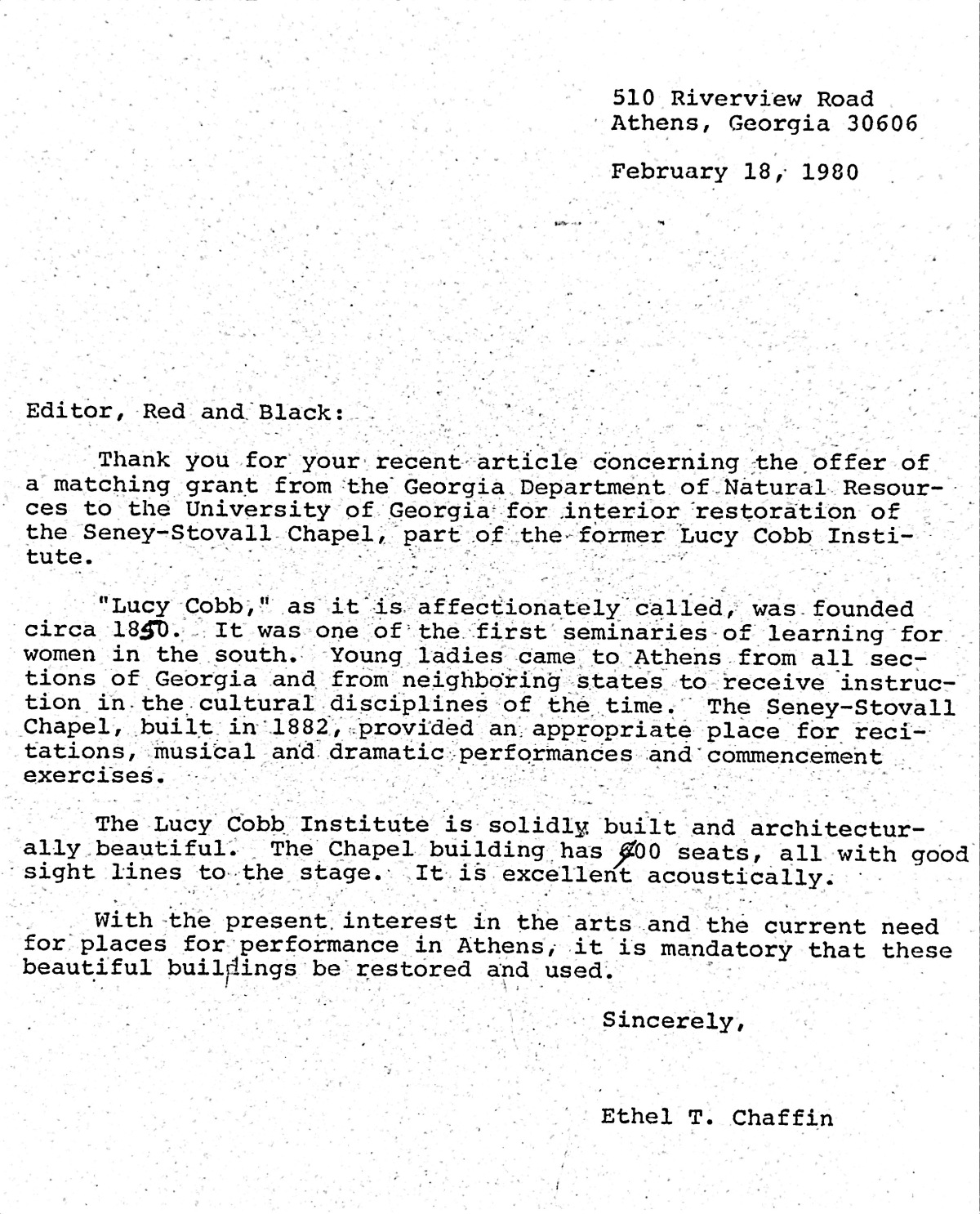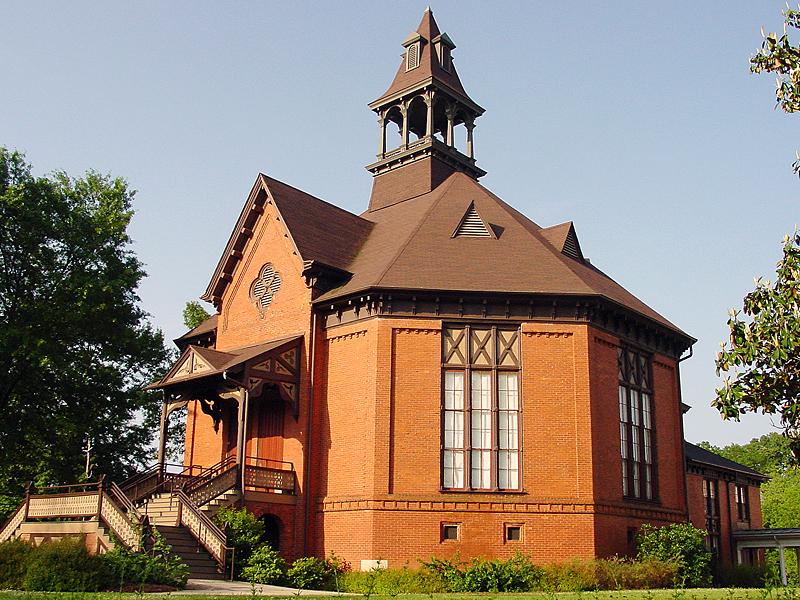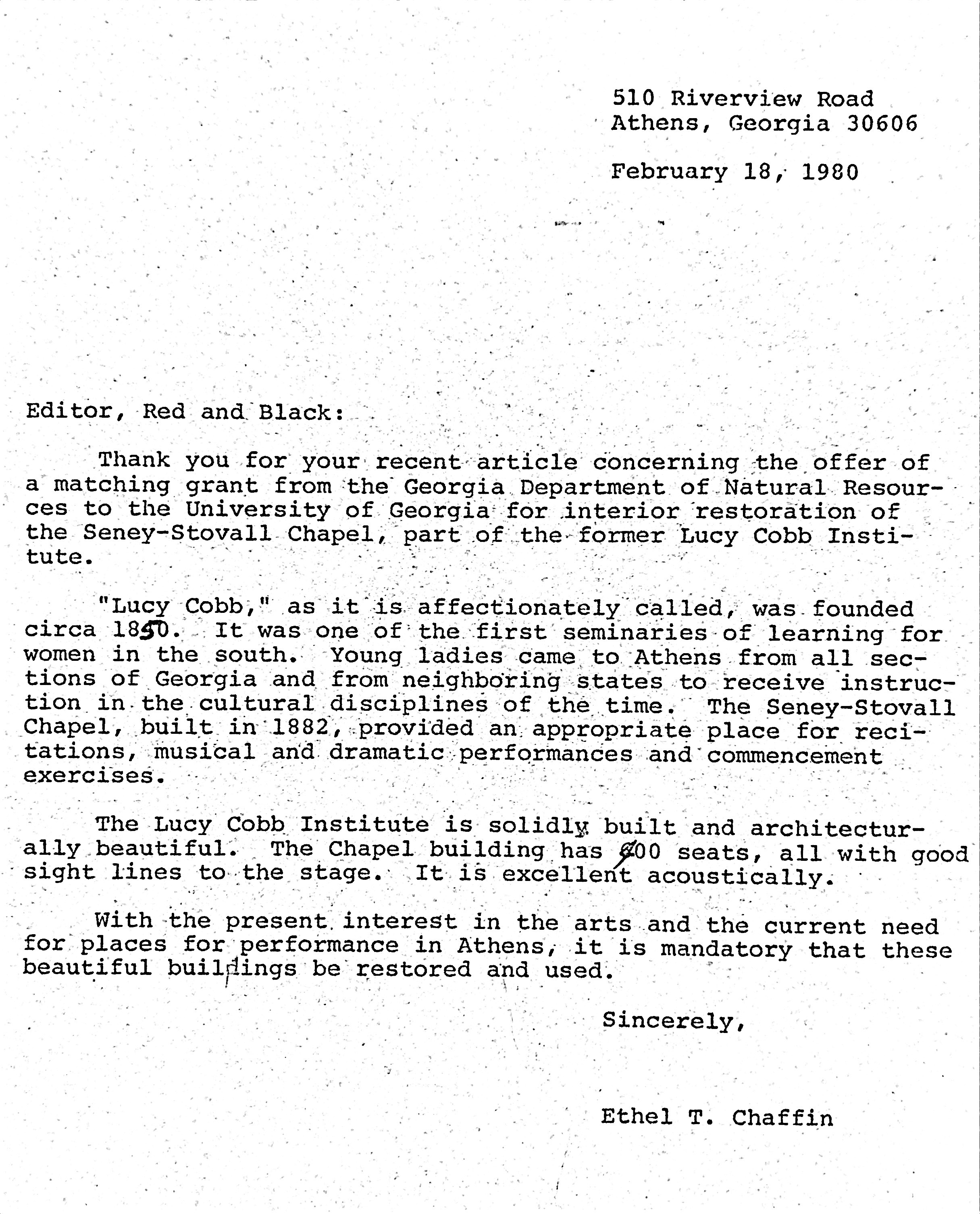Note: Normally the Heritage Room would be changing out our display cases for the summer months right about now. However, with the closure of the building, only a few patrons got to see the exhibit put up in March featuring important women from Athens. Instead we’ll be posting a brief blog post about each woman here. Check back to see more of our virtual exhibit series.
Athens may be known for its architectural treasures and its musicians, but we should also add art to this ever-growing list! From the Lyndon House to the Georgia Museum of Art, art and artists have flourished in Athens. This is due in part to the efforts of the Athens Art Association, founded in 1919 and still a part of the Athens community to this day. According to the AAA, they support local artists through exhibition and networking opportunities. You may have seen this exact mission carried out if you stopped by the Baxter Street library building in the Summer/Fall of 2019; the gallery space next to the Heritage Room hosted an exhibit of the work of 45 current members of the association, including work by Hildegard Timberlake and Harold Rittenberry. Curated by Christine Langone, the exhibit was part of a series hosted across town, including the Georgia Museum of Art, Lyndon House Arts Center, and the State Botanical Garden over the course of 2019.
Of course, there would not be an Art Association today without founding members. The founding of Athens Art Association is largely due to the efforts of women: Laura Blackshear, Sally Goodwin, Lucy Stanton, and Millie Dearing. These women were not only organizers, but also artists themselves some of whose pieces are part of the Heritage Room Art Collection today. To represent this part of Athens cultural history, the Heritage Room exhibition displayed one of the tangible links to this history that we have: Millie Dearing’s scrapbook (MSS 040), in which she describes and commemorates her work with the Athens Art Association and the Georgia Museum of Art.

Dearing became an active contributor to the Athens arts scene in the 1950s, when she moved to Athens after the death of her father, A.L. Dearing. Upon her move to Athens, Dearing began working at the Georgia Museum of Art as the secretary to Alfred Heber Holbrook, the founder and first director of the Georgia Museum of Art. (For more information on the founding of the Georgia Museum of Art, consult the New Georgia Encyclopedia article). Dearing did more than just secretarial work as well; newspaper clippings in her scrapbook show Holbrook and Dearing hanging images together after subsequent renovations to the original space allocated to the museum. Dearing’s work demonstrates her knowledge of art history and an appreciation for the original art work that began the collection. Dearing remained the secretary for the next director of the museum — Bill Paul.
In her scrapbook, Dearing collected the history of the Georgia Museum of Art through newspaper clippings and photographs. Showing off a sense of spirit for the University of Georgia from its UGA cover, the scrapbook contains clippings from what was essentially the foundation of the museum through the tenure of Holbrook as Museum Director. Throughout her scrapbook, Dearing remembers times that she was able to display her own art and times in which the Georgia Museum of Art received upgrades and new quarters. [To advance the slides, click the arrow buttons on either side of the image.]
Dearing was also an active member of the arts scene as a painter herself. Sections of her scrapbook are dedicated to clippings and programs from her own art shows where she exhibited her own oil paintings. Her scrapbook tells users that she displayed her paintings at Athens Art Association exhibitions from the 1950s onward.
Dearing was committed to improving her art; she apprenticed with community artist and founder of the AAA, Laura Blackshear. Her art continues to be displayed at AAA retrospective events every year as her work demonstrates some of the best of hobby artists in the twentieth century in Athens.
Dearing’s pieces demonstrate a keen eye for the beauty of nature and encourage viewers to slow down to experience them. Her artwork owned by the Athens-Clarke County Library show a series of beautifully painted flowers, reminding viewers to slow down and smell the, in this case, camellias.
Furthermore, Dearing’s scrapbook gives artists and researchers alike insight into the process of an artist in Athens in the mid-twentieth century, including those artists who worked another job alongside their passion for art. Her scrapbook and the varied contents, including a design for a wedding invitation to photographs of her work, provides insight into a sliver of the arts and cultural scene of Athens in the period.
Sources
Millie Dearing collection, MSS 040, Heritage Room, Athens-Clarke County Library. https://aspace-arls.galileo.usg.edu/repositories/2/resources/47
“About,” Georgia Museum of Art, 2019. https://georgiamuseum.org/about/
Ramsey, Bonnie N. “Georgia Museum of Art.” New Georgia Encyclopedia. 09 June 2015. Web. 13 July 2020. https://www.georgiaencyclopedia.org/articles/arts-culture/georgia-museum-art













